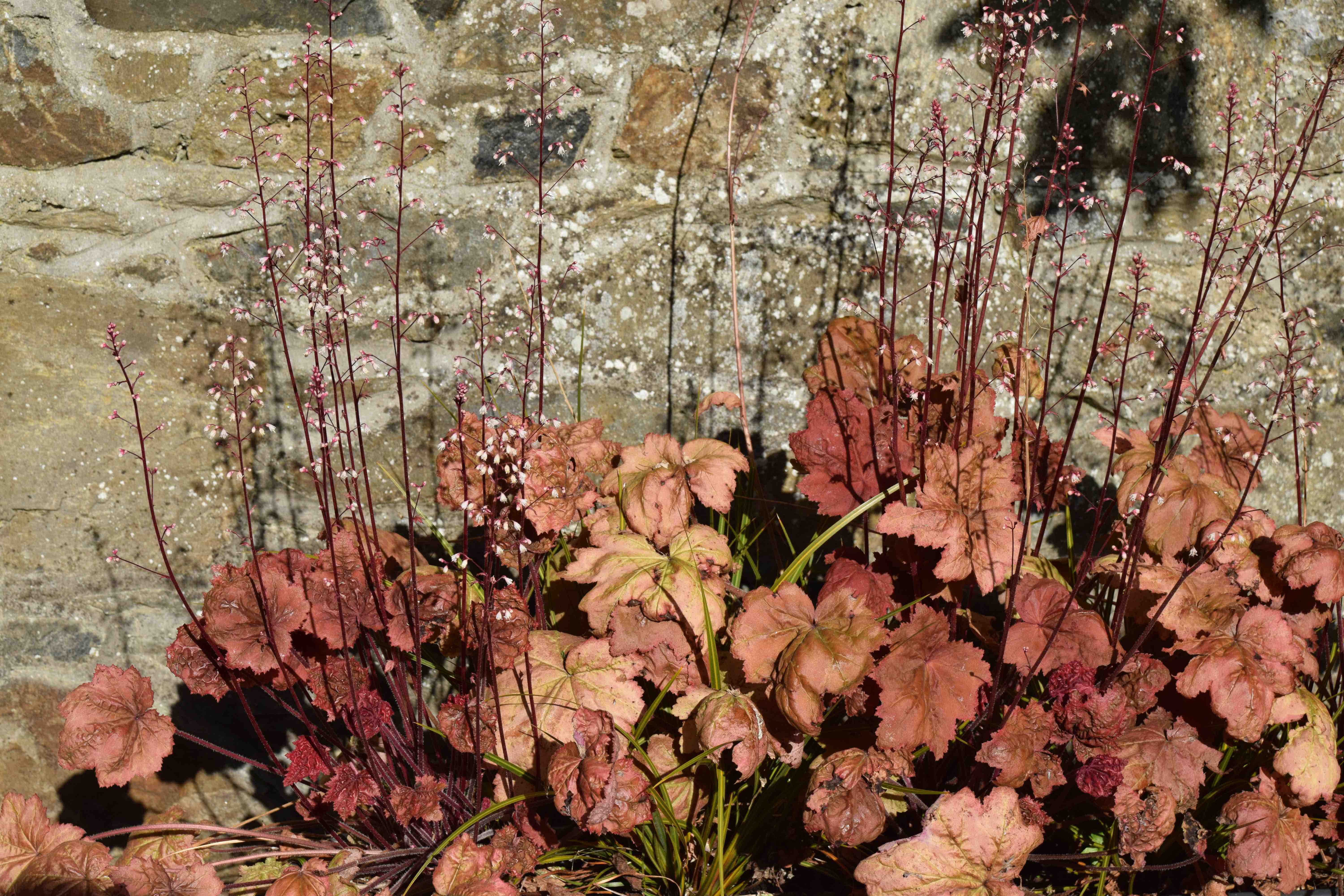
Before I start, don’t forget the clocks changed last night!
Few plants have undergone such a remarkable transformation as the once-humble heuchera. In the last 20 years we have been spoiled with exciting new heucheras that have made them essential for autumn and winter pots as well as borders all year round. No other hardy plant can match them for colourful foliage and they have so many uses.
Although some heucheras are grown for their spikes of small, but colourful blooms, most have small, white flowers above their colourful leaves. The flowers may be small but they are loved by bees so, despite the almost artificial colouring of their vibrant foliage, these are great plants for pollinators in the garden.
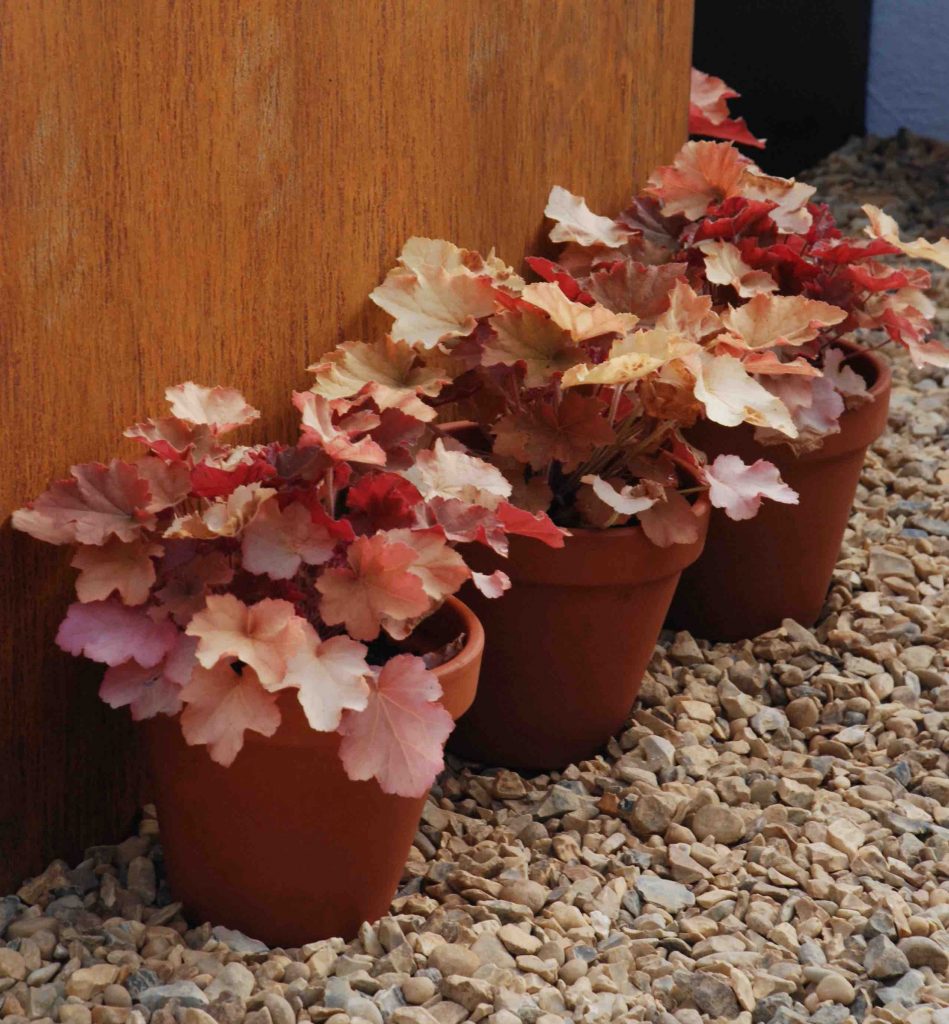
Heucheras are hardy, ideal for sun or part shade and largely evergreen, retaining some leaves in winter before the flush of vibrant new leaves in spring. They are also neat and form dense clumps of foliage. They will not spread but can be divided in spring as they age. In fact, they eventually form rather woody ‘stems’ and at this stage should be divided and replanted a bit deeper to maintain vigour. There are now hybrids with the related tiarellas called x Heucherella and these can creep and are useful for hanging baskets or where you want spreading ground cover.

I love to use them in autumn pots, with carex and a few cyclamen to provide colour and interest on the patio and I plant spring-flowering bulbs for some extra colour. Heucheras can be left in the pots for at least a year before they need to be replanted and you can pull out the cyclamen or pansies in late spring and pop in some petunias for summer.
The range of leaf colour is extraordinary: choose from rich purples, silver veins or steely grey leaves, orange, amber, yellow, pink, red or even green! Leaves can be attractively scalloped or heavily crinkled, slightly hairy or shiny and polished.
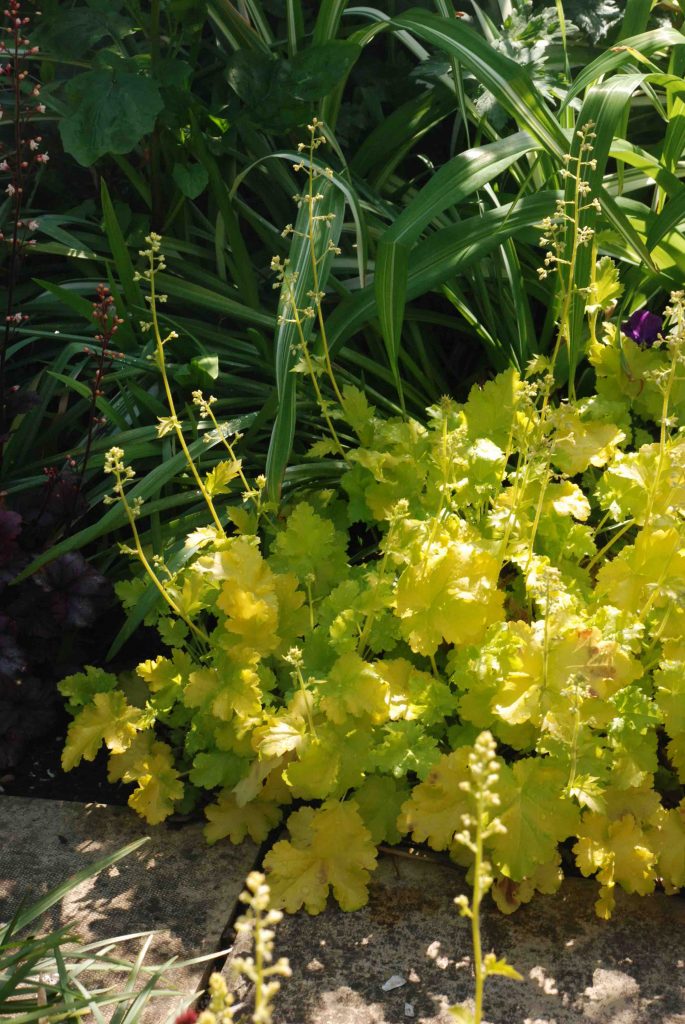
Once established they are pretty resistant to drought and the second biggest issue with them is heavy, clay soils that are waterlogged in winter – heucheras just don’t like these. They will thrive in light, sandy soils if they are watered frequently as they get established.
Where they excel is in containers. Because they should live for at least a year in the pot I don’t use multipurpose compost straight from the bag but mix it with equal parts John Innes compost to create a rich but light potting mix. Although I love all the new, bright colours I have to confess, after growing dozens of them over the years, I find some of the most dazzling, a bit hard to fit into my garden! They look almost artificial in most borders but they certainly provide lots of colour, all year, and are perfect for small gardens and raised beds.
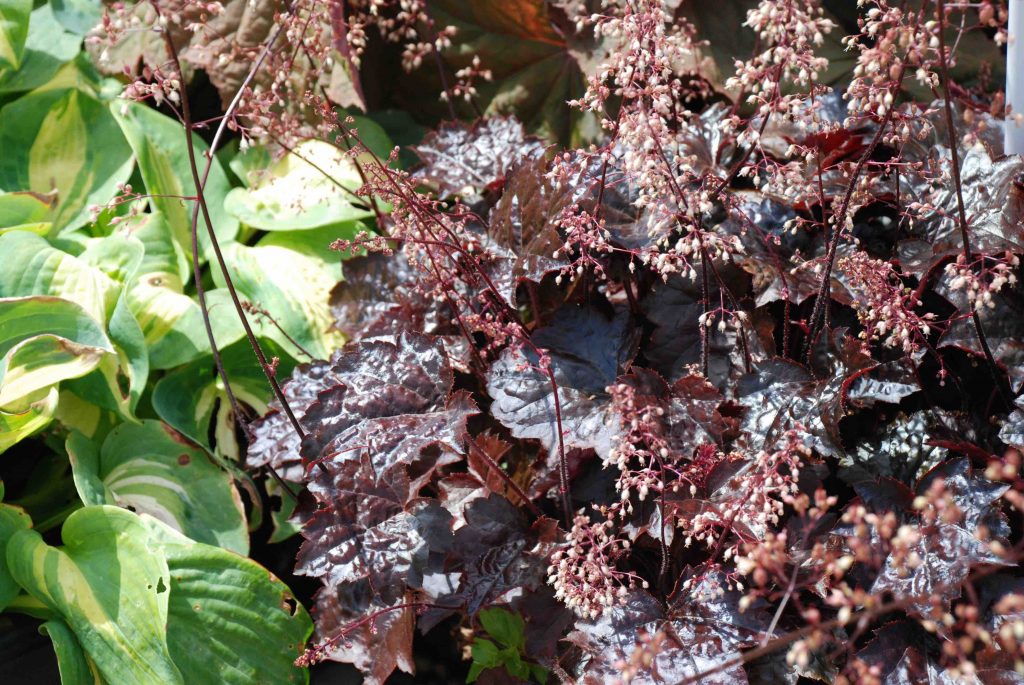
The only problem with growing them in pots, and earlier I did hint that there was a problem, is that vine weevil grubs love to eat their roots. You may never see any signs of the problem but if your plants suddenly stop growing and can be lifted off the soil, you can be sure that vine weevil are the cause. You can find out more about these here https://www.knightsgardencentres.com/news/97/tackling-vine-weevils
You can plant them individually in pots or combine two or three in a pot. Their colours complement those of hostas and I think that nothing is more dramatic and beautiful than a bed of heucheras and hostas, with a few ferns and grassy carex for contrast and they will make that troublesome shady bed into the pride of your garden.
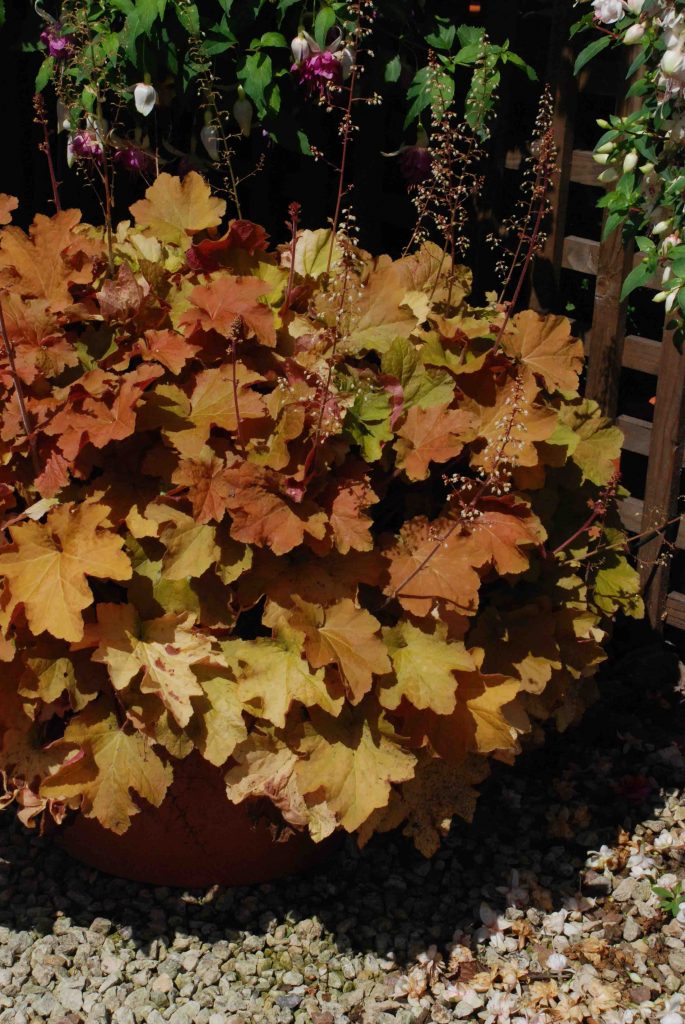
Why grow them?
For their amazing range of foliage colours and evergreen, beautiful leaves. The flowers tend to be less dramatic but bees love them and they can also be pretty and are good for cut flowers.
Where to grow it
They will grow in sun or part shade but they detest heavy, wet, clay soils. Yellow and orange-leaved kinds can scorch if the soil is too dry in summer and they will look better with a little shade. Dark-leaved kinds always colour best in good light.
Where to start
Buy your favourite kind now and plant in a patio pot with spring bulbs. They will provide lots of colour all winter. In late spring you can carefully remove the heucheras and plant them in the garden. Or you can leave them in the patio pot for a couple of years.
Who will like this?
Anyone who wants a really beautiful display of foliage all year
Plant them with …
I love them in a semi-shaded spot with hostas and ferns. These three will provide maximum colour and foliage contrast in summer and just look fabulous!
Weekly jobs
Spring bulbs Try to complete all your bulb planting soon. Tulips can be planted in November but all the rest need to be planted as soon as possible.
Roses Cut back roses and buddleias by up to half to reduce storm damage in winter. But delay pruning till spring.
Lawns Cut the lawn if necessary and rake off leaves. Rake off moss and spike the lawn to improve drainage. But keep off if the lawn is really soggy.